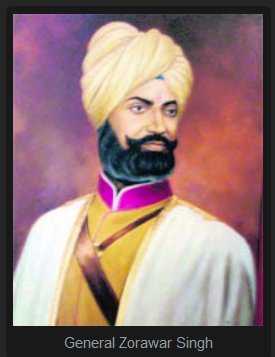Ajay Banerjee
Tribune News Service
New Delhi, August 5
More than 185 years after General Zorawar Singh entered into a battle to merge the Buddhist-dominated kingdom of Ladakh with Ranjit Singh’s Lahore headquartered Sikh empire, the strategically vital frontier will now, for the first time, be governed directly from New Delhi.
Zorawar Singh had entered Ladakh via Zojila Pass in 1834, a clash ensued following which the local king was made a vassal of the Sikh empire paying an annual tribute of Rs 20,000. Barring a brief period of the Mughal rule, Ladakh had not paid any tribute to Kashmir ever.
Home Minister Amit Shah today paved the way for Ladakh to become a Union Territory without legislature, making New Delhi, for the first time, directly control the eastern flank of the proposed bifurcated state of J&K.
Till now Article 370 in the state meant that the Centre, for rolling out any scheme, for the local population (some 30 lakh) had to go through the state government, whose concurrence was needed.
It slowed down matters like making roads or power supply schemes. In some cases even barren areas were converted into wildlife sanctuaries holding back road construction in sensitive areas like Chusul.
With politicians from the Valley dominating the discourse, Ladakh was more connected to Delhi than to Srinagar and during winter months, the Indian Air Force transport planes flying to Chandigarh were a lifeline for the region, which is cut-off during six months of winter.
Strategically, the new move means the writ of the Central government directly run along the 823-km frontier Ladakh shares with China. The new UT will also share a boundary with Pakistan as the Line of Control (LoC) east of Zojila running along Kargil, Drass and Batalik ending at Point NJ-9842 will form its northern boundary. All along the eastern flank of Siachen, the new UT will share a 109-km-long Actual Ground Position Line (AGPL) with Pakistan.
After the conquest of Zorawar Singh till 1846, things changed rapidly in Ladakh. Ranjit Singh died in 1839 and three years later Raja of Jammu Gulab Singh entered into a fresh agreement with Ladakh.
In 1842, a “Ladakhi letter of agreement” with Gulab Singh says the “relationship between Maharaja Gulab Singh of Kashmir and the Lama Guru of Lhasa (Dalai Lama) is now established”. In 1846, the British after defeating the Sikh Army signed the treaty of Amritsar and carved J&K that included Ladakh and handed over control to Gulab Singh designating him as “Maharaja”.
Slice of history
- In the beginning of the 19th century, the Mughal Empire had collapsed and Sikh rule had been established in Punjab and Kashmir
- King Tshespal Namgyal was dethroned and exiled to Stok. Ladakh came under Dogra rule and was incorporated into J&K in 1846
- It still maintained considerable autonomy and relations with Tibet. During the Sino-Sikh War (1841–42), the Qing Empire invaded Ladakh, but the Sino-Tibetan army was defeated
- Ladakh was claimed as part of Tibet by Phuntsok Wangyal, a Tibetan Communist leader
- In 1947, Partition left Ladakh a part of the Indian state of Jammu and Kashmir, to be administered from Srinagar
Unlock Exclusive Insights with The Tribune Premium
Take your experience further with Premium access.
Thought-provoking Opinions, Expert Analysis, In-depth Insights and other Member Only Benefits
Already a Member? Sign In Now










